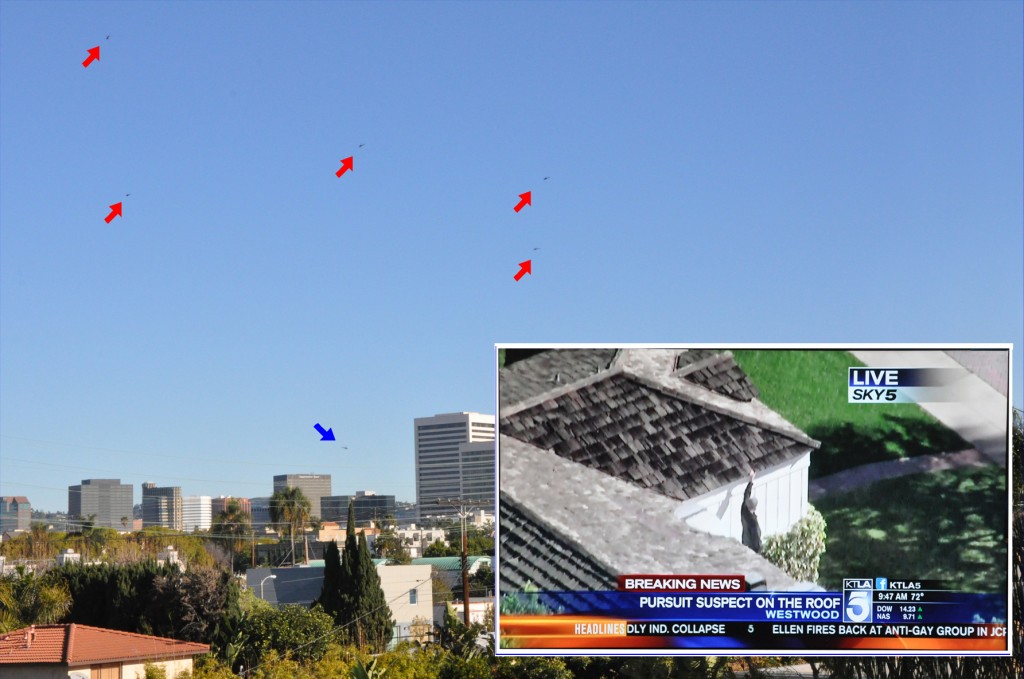The Northern District of Texas is the home of a significant wireless law suit just filed, and one which will be of keen interest nationwide to both industry members, and to wireless site landlords. Heck, this case will fascinate the likes of Unison, Wireless Capital Partners, Communications Capital Group, Landmark, and the others who (like TriStar) purchase cell site leases and take easements in the property under cell sites.
In this case, David (TriStar Investors) is suing Goliath (American Tower and its various operating companies) for:
Count 1: Violation of the Lanham Act, 15 U.S.C. 1125(a)
Count 2: Unfair Competition
Count 3: Business Disparagement
Count 4: Tortious Interference with Existing Contract
Count 5: Tortious Interference with Prospective Business Relations
Count 6: Breach of Contract
In Count 7, TriStar asks (under Texas law) for a permanent injunction commanding American Tower to refrain from doing three things.
Specifically it asks the court to permanently bar American Tower from:
(1) making false statements about its own services and commercial activities in negotiations with landowners;
(2) making false statements about TriStar’s services and commercial activities in negotiations with landowners; and
(3) making statements to landowners under contract with TriStar for purposes of inducing a breach of the TriStar contract.
As set out in the introduction to the case by TriStar:
This is a case about unfair competition and false advertising in the cell tower industry. American Tower, a massive corporation, has resorted to unfair and illegal tactics in negotiations with landowners for cell tower sites when faced with competition from a tiny competitor, TriStar. Rather than competing fairly and acquiring sites through superior offers, American Tower has systematically misinformed and deceived landowners to acquire sites under less favorable economic terms than those offered by TriStar, to the material detriment of TriStar and landowners nationwide.
(Complaint @ 1)
Some interesting assertions taken from TriStar’s complaint:
“[B]eginning in 1999, carriers began to outsource their towers by transferring control of the towers to a new market entity: the
tower company.” (Compliant @ 25) “The first transaction in which a carrier transferred control of its towers occurred in 1999. Under the terms of that transaction, Bell Atlantic sold actual ownership of the tower steel to Crown Castle.” (Compliant @ 28)
“The tower companies, in exchange for their investment of capital to control a tower site, were the beneficiaries of two critical opportunities: (1) the lease-back payment from the carrier that had previously owned the tower, and (2) the option to lease additional space on the tower to other wireless carriers.” (Complaint @ 26)
“Today, there are more than 100,000 cell towers in the United States. Over half of those towers are controlled by three major public tower companies.” (Complaint @ 27)
“American Tower recently disclosed that approximately 86% of the communications sites in its portfolio are located on leased land. In order to establish or maintain their control of tower sites and generate revenue, American Tower must negotiate new ground leases, or renewals of current ground leases, with landowners on an individualized basis.” (Compliant @ 30)
Here’s a biggie: “Since the formation of the cell tower industry in the mid-1990s, the total cash flow produced by a typical cell tower has increased by more than $50,000 per year, while the total cash flow received by a typical landowner in the form of ground rent has increased by less than $10,000 per year. Whereas the typical landowner previously received approximately 40% of a cell tower location’s total cash flow, landowners now typically receive less than 15% from the tower companies. Over the course of the past 15 years, the total cash flow from a typical cell tower has increased by more than 400%, while the share of total cash flow that is typically received by a landowner has declined by more than 50%.” (Complaint @ 33) “A typical cell tower operated by American Tower produces annual gross cash flow in excess of $80,000 for the company, whereas the landowner of such site typically receives less than $15,000.” (Compliant @ 34)
Fascinating, eh?
Now, about TriStar, formed in 2005:
“Most commonly through execution of an easement with the landowner, but occasionally via a fee purchase or successor lease, TriStar acquires the right to manage a communications site once the underlying ground lease with the existing tower company expires. The tower company enjoys the full benefit of its lease for the duration of the existing term without interference from TriStar. Upon lease expiration, TriStar takes over the management of the tower property from the tower company and endeavors to maximize benefit to the landowner.” (Complaint @ 39). [See my comments below for more on this. -jlk]
“TriStar has acquired (or has fully executed agreements to acquire) control of over 600 tower locations throughout the continental United States.” (Complaint @ 41)
Why is American Tower ticked at TriStar?
“Since entering the industry, TriStar has acquired property rights underlying several hundred tower locations leased or subleased by American Tower. TriStar’s business model is to not renew leases with American Tower when they expire, but instead to operate each tower site for wireless communications purposes upon expiration of the respective lease (either by acquiring rights to the existing tower or constructing a replacement tower at the same location, which is typically permitted by local zoning regulations).” (Complaint @ 43)
If the snippets above have not made you want to read the entire complaint then I don’t know what will. The full complaint is linked below. You really should read it if you’re into wireless as anything more than a
As a wireless attorney working for site landlords (both private parties and governments), I’ll be particularly interested in following this case. I have some tower site landlord clients that have been warned by American Tower that if they sell their sites to anyone by American Tower, they face the wrath of Goliath’s legal department. That’s even if the landlord today sells an interest that does not commence until after American Tower’s interest completely terminates.
Apparently, American Tower believes that one of its rights today, is to have the future opportunity to enter into a new contract after the current one expires. That’s a legal stretch somewhat equivalent to you telling your office landlord that if today he enters into a new lease with a different tenant for your office space, and that new lease does not commence until after the final expiration date of your lease, you can sue the landlord claiming …. ah …. ah ….
I wonder how long it will take for some enterprising attorney to try to form a class of site landlords who have been ‘dissuaded’ by American Tower, but that’s for a different post.
Read the complaint…Don’t wait for the movie: David v. Goliath



